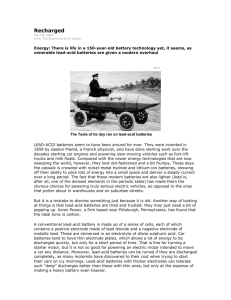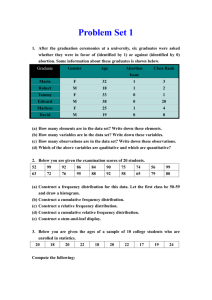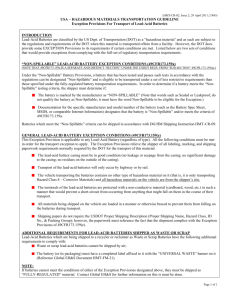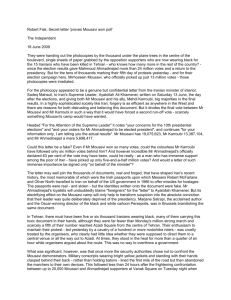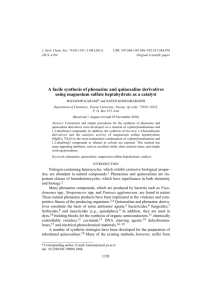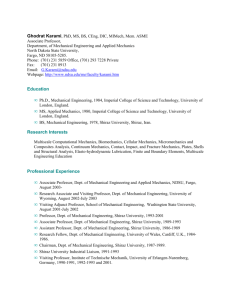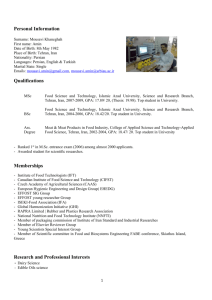A Review of Preparing Methodes for Nano
advertisement
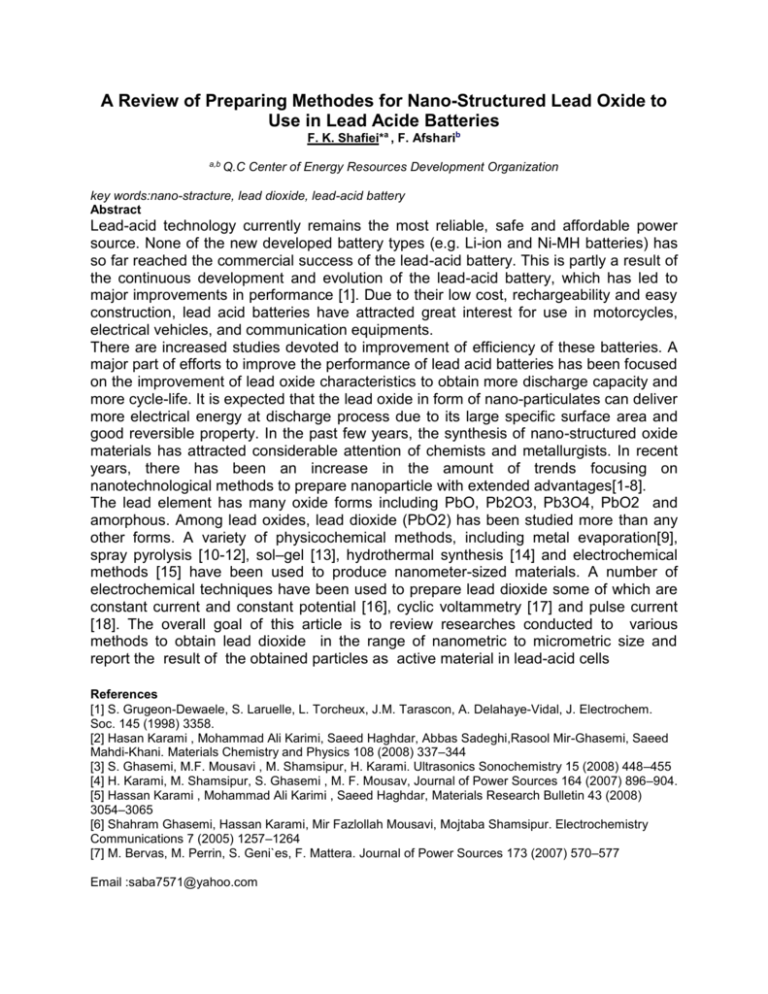
A Review of Preparing Methodes for Nano-Structured Lead Oxide to Use in Lead Acide Batteries F. K. Shafiei*a , F. Afsharib a,b Q.C Center of Energy Resources Development Organization key words:nano-stracture, lead dioxide, lead-acid battery Abstract Lead-acid technology currently remains the most reliable, safe and affordable power source. None of the new developed battery types (e.g. Li-ion and Ni-MH batteries) has so far reached the commercial success of the lead-acid battery. This is partly a result of the continuous development and evolution of the lead-acid battery, which has led to major improvements in performance [1]. Due to their low cost, rechargeability and easy construction, lead acid batteries have attracted great interest for use in motorcycles, electrical vehicles, and communication equipments. There are increased studies devoted to improvement of efficiency of these batteries. A major part of efforts to improve the performance of lead acid batteries has been focused on the improvement of lead oxide characteristics to obtain more discharge capacity and more cycle-life. It is expected that the lead oxide in form of nano-particulates can deliver more electrical energy at discharge process due to its large specific surface area and good reversible property. In the past few years, the synthesis of nano-structured oxide materials has attracted considerable attention of chemists and metallurgists. In recent years, there has been an increase in the amount of trends focusing on nanotechnological methods to prepare nanoparticle with extended advantages[1-8]. The lead element has many oxide forms including PbO, Pb2O3, Pb3O4, PbO2 and amorphous. Among lead oxides, lead dioxide (PbO2) has been studied more than any other forms. A variety of physicochemical methods, including metal evaporation[9], spray pyrolysis [10-12], sol–gel [13], hydrothermal synthesis [14] and electrochemical methods [15] have been used to produce nanometer-sized materials. A number of electrochemical techniques have been used to prepare lead dioxide some of which are constant current and constant potential [16], cyclic voltammetry [17] and pulse current [18]. The overall goal of this article is to review researches conducted to various methods to obtain lead dioxide in the range of nanometric to micrometric size and report the result of the obtained particles as active material in lead-acid cells References [1] S. Grugeon-Dewaele, S. Laruelle, L. Torcheux, J.M. Tarascon, A. Delahaye-Vidal, J. Electrochem. Soc. 145 (1998) 3358. [2] Hasan Karami , Mohammad Ali Karimi, Saeed Haghdar, Abbas Sadeghi,Rasool Mir-Ghasemi, Saeed Mahdi-Khani. Materials Chemistry and Physics 108 (2008) 337–344 [3] S. Ghasemi, M.F. Mousavi , M. Shamsipur, H. Karami. Ultrasonics Sonochemistry 15 (2008) 448–455 [4] H. Karami, M. Shamsipur, S. Ghasemi , M. F. Mousav, Journal of Power Sources 164 (2007) 896–904. [5] Hassan Karami , Mohammad Ali Karimi , Saeed Haghdar, Materials Research Bulletin 43 (2008) 3054–3065 [6] Shahram Ghasemi, Hassan Karami, Mir Fazlollah Mousavi, Mojtaba Shamsipur. Electrochemistry Communications 7 (2005) 1257–1264 [7] M. Bervas, M. Perrin, S. Geni`es, F. Mattera. Journal of Power Sources 173 (2007) 570–577 Email :saba7571@yahoo.com [8] Xinfeng Zhu , Lei Li , Xiaojuan Sun , Danni Yang , Linxia Gao , Jianwen Liu ,R. Vasant Kumar , Jiakuan Yang . Hydrometallurgy 117-118 (2012) 24–31. [9] L. Carbone, S. Kudera, E. Carlino, W.J. Parak, C. Giannini, R.Cingolani, L. Manna, J. Am. Chem.Soc. 128 (2006) 748. [10] M. Regragui, M. Addou, A. Outzourhit, J.C. Bernede, E.E. Idrissi, E.Benseddik, A. Kachouane, Thin Solid Films 358 (2000) 40. [11] M. Cruz, L. Hernán, J. Morales, L. Sánchez, J. Power Sources 108 (2002) 35. [12] K. Konstantinov, S.H. Ng, J.Z. Wang, G.X. Wang, D. Wxler, H.K. Liu, J. Power Sources 159 (2006) 1451. [13] J. Xie, X. Cao, J. Li, H. Zhan, Y. Xia, Y. Zhou, Ultrason. Sonochem.12 (2005) 289. [14] E. Shen, C. Wang, E. Wang, Z. Kang, L. Gao, C. Hu, L. Xu, Mater.Lett. 58 (2004) 3761. [15] Kh. Ghanbari, M.F. Mousavi, M. Shamsipur, Electrochim. Acta 52(2006) 1514. [16] P.K. Shen, X.L. Wei, Electrochim. Acta 48 (2003) 1743. [17] D. Devilliers, M.T. Dinh Thi, E. Mahe´, V. Dauriac, N. Lequeux, J. Electroanal. Chem. 573 (2004) 227. [18] N. Vatistas, S. Cristofaro, Electrochem. Commun. 2 (2000) 334.

